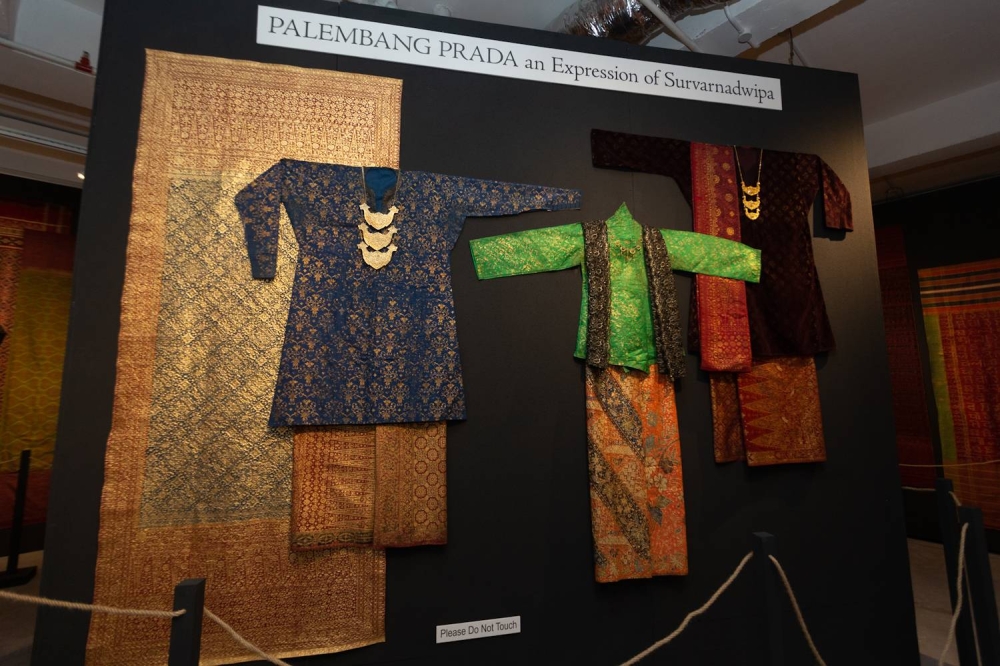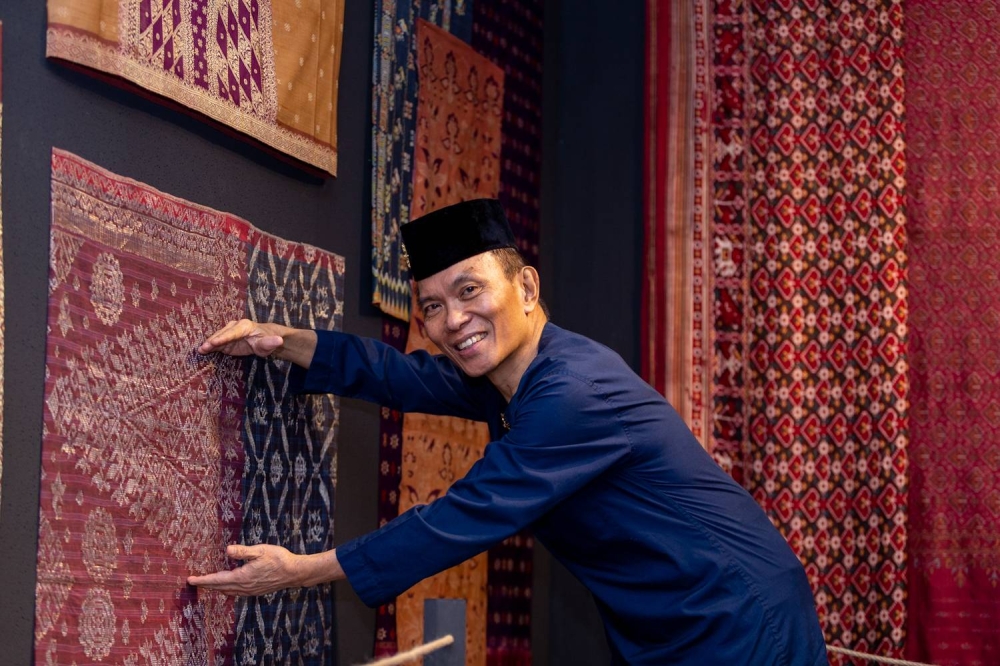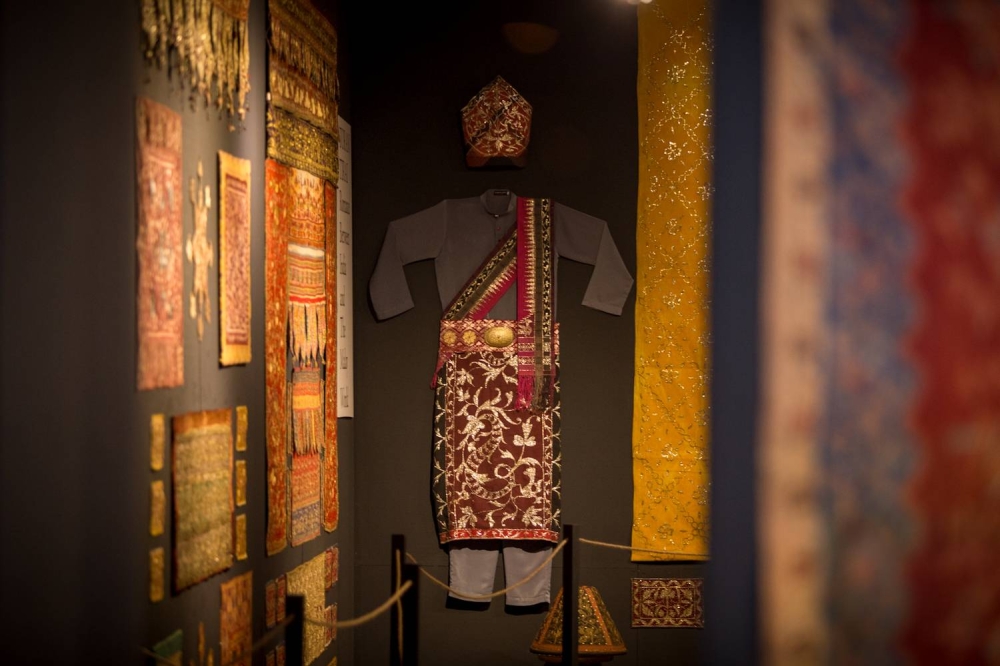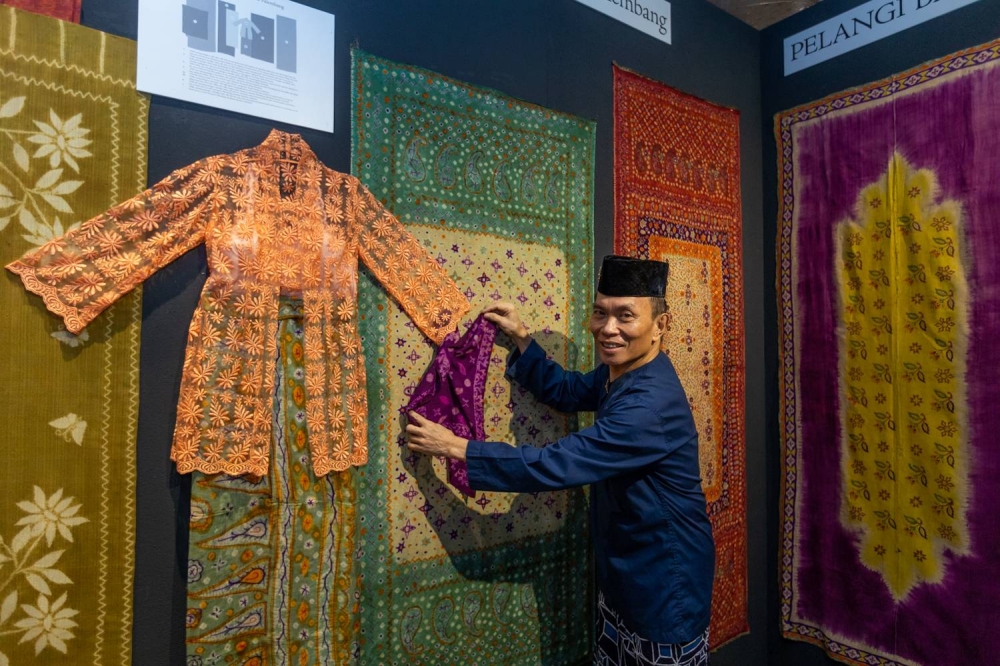PETALING JAYA, Sept 6 — What can a piece of textile tell us about our history, identity, and culture?
According to textile collector and Asian art historian John Ang, a lot more than you think.
“Textiles can offer us clues to unravel things about ourselves that we didn’t previously know,” he said.
“They can reveal connections that have never been written about before.
“And if we’re talking about this exhibition specifically, these textiles show the rich and diverse history of the Malay world.” The exhibition Ang is referring to is “Splendours Of Malay World Textiles”, which showcases some 700 textiles from his own personal collection.

Featuring intricate clothing, fabrics, and woven pieces sourced from a range of countries, the exhibit is currently on display at Menara Ken, Taman Tun Dr Ismail till October 30.
While the number of pieces showcased may seem overwhelming, it is only a fraction of Ang’s 5,000-piece collection of Malay textiles.
“My friends tell me that I’m not passionate about textiles ― I’m obsessed,” he said with a laugh.
As he led Malay Mail on a tour of the exhibit, Ang was eager to share the story of the first-ever Malay textile he acquired in 2014.
“These double green lines are very common in Cambodian textiles, particularly those made by the Chams (or Champa) people,” he said, barely containing his excitement.
“With this single piece of fabric as a starting point, I was also able to track the trade routes of the Chams just by looking for these green double lines.” “Isn’t it fascinating to see how all these cultures interacted with each other in the past?”

Weaving together heritage
Visitors to the exhibition are first greeted by a display of ceremonial songket baju Melayu (Malay clothing with gold supplementary weft decoration) previously worn by royalty.
“Most of these are from the east coast, Terengganu and Kelantan,” Ang explained.
“I wanted to start with something familiar to welcome visitors, and these pieces also show the elegant style of the old courts,” said Ang.
From there, the exhibition is divided into 12 categories of textiles: songket; limar (weft ikat); telepuk/ prada (gold leaf application); sulaman/ tekatan (embroidery); pelangi (tie-dye); ikat loseng (warp ikat); tenunan (weaves of stripes and checks); tapestry (there is no standardised Malay word for this weave as it is called by different names across regions); cetakan (woodblock or machine prints); batik (wax resist prints); renda (lace); and anyaman (woven unspun plant fibre).
Ang said that he arranged the exhibit in this manner so it would be easier for the uninitiated to “get a grasp of the entire genre”.
“I think Malay textiles are still under-researched and underappreciated, there is a dearth of written material and records of all these various textiles,” he added.
“A Malay textile is not necessarily made by the Malays, but is what Malays like; it is designed according to ‘cara Melayu’, the style of the Malays.
“It’s a strong concept that shows they have their own sense of design ― even influences from other cultures are always recreated and adapted instead of being simply ‘copied’.” As such, textiles from other regions ― such as Gujarat, India and the Netherlands ― are also on display to showcase the influences other cultures have had on Malay textiles, alongside jewellery and other accessories.
“Back then there were no cultural barriers; everything was intercultural, interconnected,” Ang mused.
“When you understand how others have influenced your own identity, and the similarities we share, it helps to create a sense of understanding among cultures.”

An affinity for textiles
Born in Chicago, United States, to Singaporean parents and later raised in Singapore, Ang has had a cross-cultural life himself.
He worked as an art journalist in Tokyo, Japan, before moving to Taipei, Taiwan to establish a gallery specialising in Asian antiques, textiles, ceramics and jewellery.
After spending 30 years in Taiwan, he relocated to Malaysia in 2018 to further his mission of piecing together the histories and traditions of Malay textiles.
Ang also had an ancestor who shared his love for textiles; his great-great-grandfather was Tan Hiok Nee, an influential textile trader in Johor during the 1800s.
“It does give me goosebumps to realise that I’m buying the same pieces he sold all those years ago,” Ang said.
However, his drive with his Malay textile project goes beyond family history.
“My hope is that this project will contribute to the movement of acknowledging the value of these cultural assets.
“This need to preserve these assets is what keeps me going despite the challenges, it gives me a sense of bliss,” he said.
The sheer task of putting on “Splendours Of Malay World Textiles” has been one such challenge ― it took Ang three and a half years to curate the display, and he continues to collect even more textiles.
Then there is the effort to preserve the pieces in his collection, currently residing in his home, alongside restoration costs to repair damaged items.
Above all, there is the uncertainty of who will take over the collection in the future.
“This collection should remain intact and should find a home in Malaysia,” Ang added.
“If you know what your ancestors invented, you can then use that to spark new work; you want culture to evolve, not stay stagnant.”
The entry fee is for the exhibition is RM35, and tickets to the exhibition as well as talks, can be purchased at https://www.johnang.com.my/























